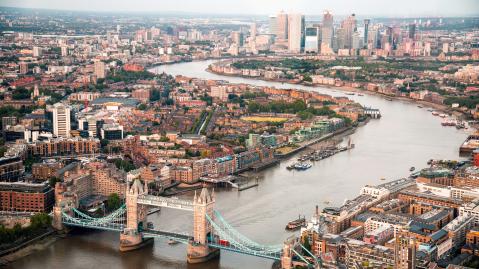UK outlines details for Carbon Border Adjustment Mechanism introduction from 2027

On 30 October 2024, the UK Government published its response to a policy design consultation held earlier this year on the introduction of a UK Carbon Border Adjustment Mechanism (CBAM), set to begin in January 2027. The response outlines the design and administration of the CBAM, which will apply to five sectors at high risk of carbon leakage. In the next steps, HM Revenue & Customs, the UK’s authority on tax, payments, and customs, will formalize the CBAM proposal through new primary and secondary legislation.
The key elements of the proposed UK CBAM are as follows:
- Coverage: The UK CBAM will apply to imports of specific goods in the aluminum, cement, fertilizers, hydrogen, and iron and steel sectors (see Annex B). Regarding greenhouse gas coverage, it will include carbon dioxide (CO2) emissions across all sectors, as well as nitrous oxide (NO2) for fertilizers, and perfluorocarbons (PFSs) for aluminum. The UK CBAM will cover both direct emissions related to the production processes of the CBAM goods, as well as indirect emissions related to the production of electricity consumed during their production.
- Emissions reporting: UK importers will have the option to report embedded emissions in their CBAM goods using either actual emissions data or default values when actual data is not available. For calculating default values, the UK government will use a single default value per product, based on global average weighted by production volumes in key UK trade partners. The government will consider the feasibility of moving to an alternative approach after 2027, with the most suggested approach from the consultation being country-specific or regional default values per product.
- CBAM rate: The government will also publish a CBAM rate that reflects the carbon price faced by domestic producers under the UK ETS and Carbon Price Support. This rate will consider adjustment, exemptions or compensation schemes available to producers under UK ETS. A separate CBAM rate will be set for each sector and updated quarterly.
- Third-country carbon pricing: If a carbon price is applied in the country of origin for imported CBAM goods, UK importers will only need to pay the difference between the UK CBAM carbon price and the carbon price in the place of origin. The government confirmed that only explicit carbon prices will be recognized under UK CBAM. These include emissions trading systems (ETSs) with a market-based price or a carbon tax with a fixed price. Non-pricing carbon policies, such as fuel duties, will not be recognized. Third country carbon prices will be referenced on a quarterly basis.
- SME considerations: To mitigate the disproportionate administrative burdens on small and medium-sized enterprises (SMEs), the government has decided to increase the minimum registration threshold for liable UK importers from the proposed £10,000 to a final value of £50,000 over a 12-month rolling period. According to the government’s latest modelling, this increase remains effective in aligning compliance costs with the actual carbon leakage risks.
The key differences between the proposed UK CBAM and EU CBAM are listed as below:
UK CBAM | EU CBAM | |
| Sectoral coverage | Aluminum; cement; fertilizers; hydrogen; and iron and steel sectors from 2027. Inclusion of the glass and ceramics sectors at a later date. | Aluminum; cement; fertilizers; hydrogen; iron and steel and electricity sectors. |
| Scope of emissions covered | Direct and indirect emissions for all covered sectors. | Reporting obligation for direct and indirect emissions for all covered sectors; compliance obligation for indirect emissions for cement and fertilizers sectors only. |
| Default values | Default values per product. No information on limits. | Default values per product. Use of default values is permitted until Q2 2024 with no quantitative limits; from Q3 2024 until Q4 2025 default values can be used for reporting only up to 20% of embedded emissions. |
| CBAM rate | Set separately for each CBAM sector; reflects UKA price and Carbon Price Support, to be adjusted on a quarterly basis. | CBAM certificate price; universal across all CBAM sectors; reflects EUA price, to be adjusted on a weekly basis. |
| Adjustment for third country carbon price | Only explicit carbon prices will be recognized | |
| Minimum threshold for liable importers | £50,000 over a 12-month rolling period. | If the value of one shipment is equal to or greater than €150. |
To better align the UK CBAM launch with the domestic ETS, the UK ETS Authority has initiated a consultation on extending free allocations through 2026 and delaying the second period to 2027, with a final decision pending.
Moving forward, a CBAM industry group and a CBAM international group will be established to continue engagement with key stakeholders and other governments. Additionally, a comprehensive communications package and detailed guidance are currently being developed.

